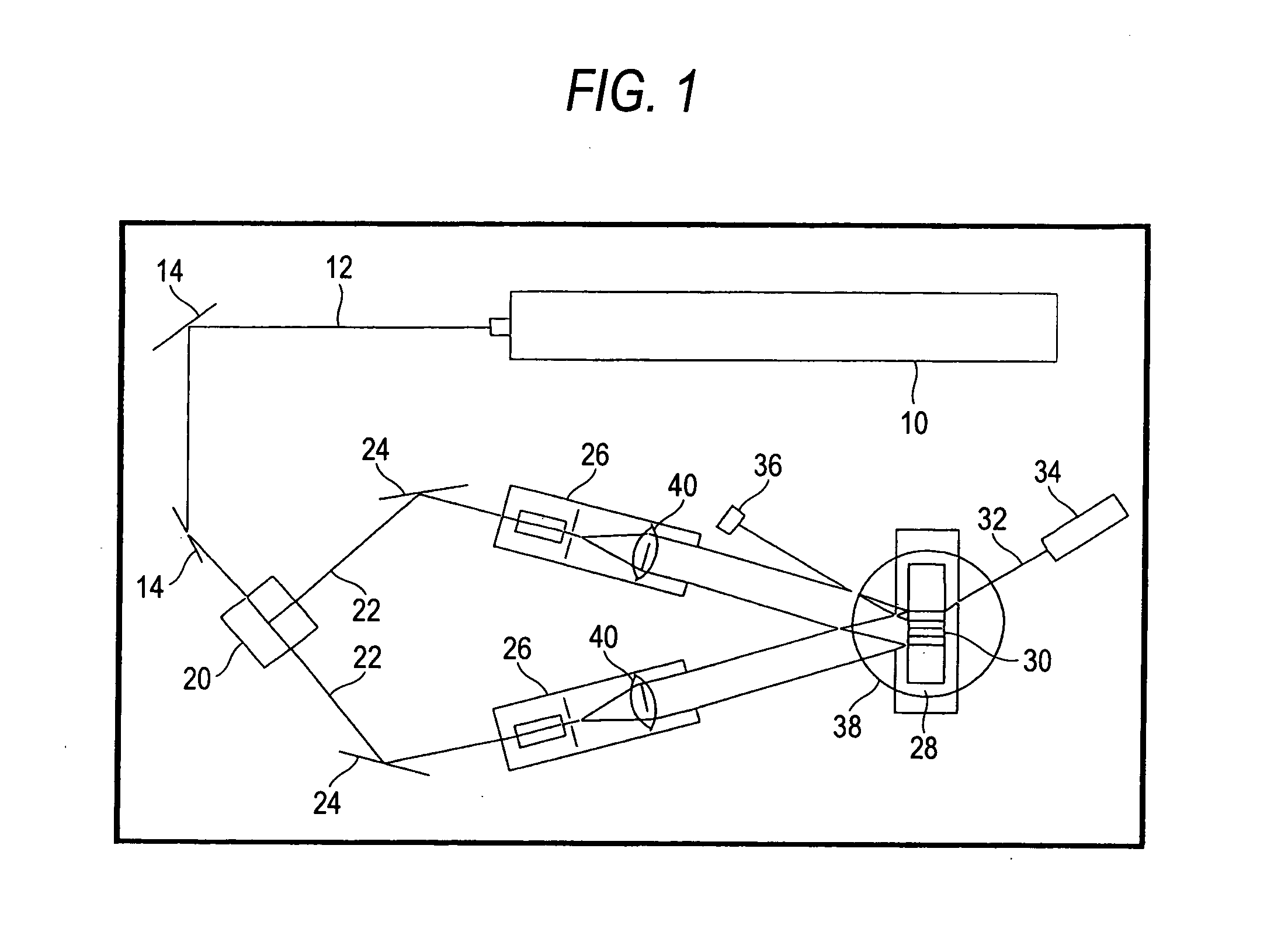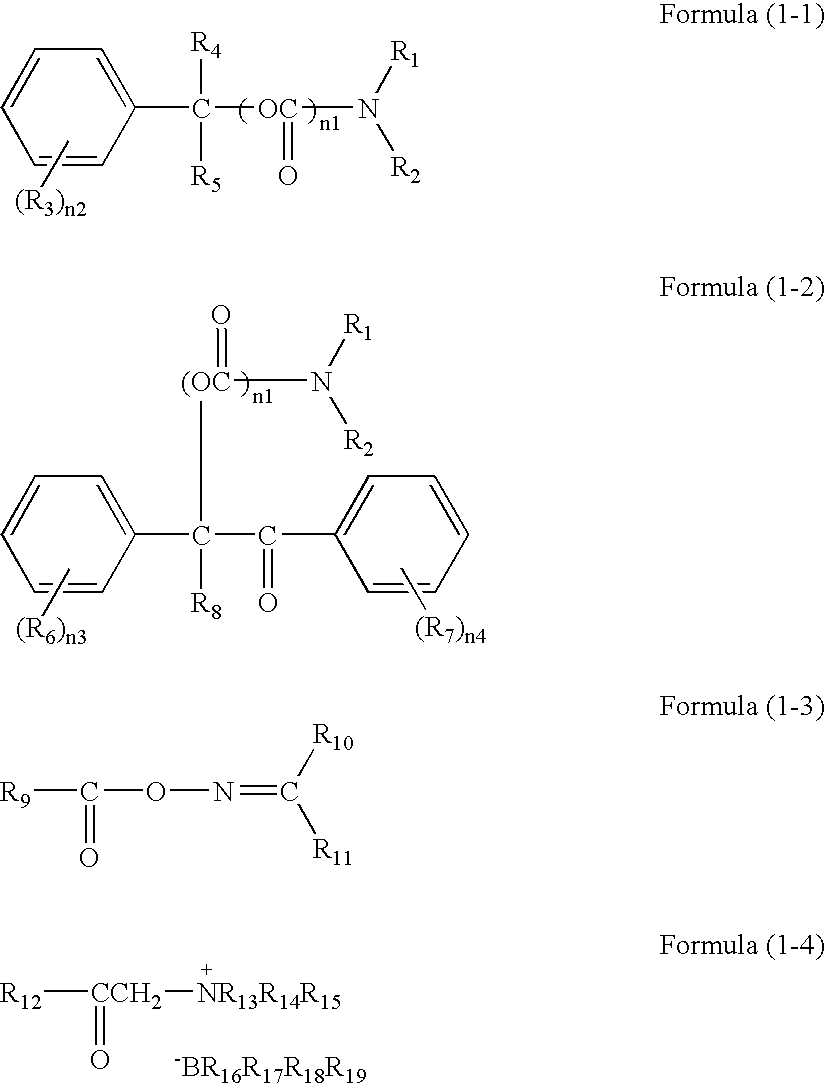However, these known materials for recording a volume phase hologram are failing in satisfying all requirements required particularly in use for a high-sensitivity high-resolution full-color three-dimensional display, and improvements are demanded.
More specifically, for example, the
gelatin bichromate
system has high
diffraction efficiency and
low noise property but despite such advantages, this
system has a problem in that the storability is very bad, a wet
processing is necessary and the sensitivity is low.
The bleached
silver halide system has high sensitivity but despite such an
advantage, this system has a problem in that a wet
processing is necessary, the bleaching process is cumbersome and the light fastness is poor.
The photorefractive material is rewritable but despite such an
advantage, this material has a problem in that a high
electric field must be applied at the recording and the recording preservability is bad.
The photochromic
polymer system as represented by an
azobenzene polymer material and the like is rewritable but despite such an
advantage, this system has a problem in that the sensitivity is very low and the recording preservability is bad.
However, in view of physical principle, existing two-dimensional optical mediums such as DVD-R can have a capacity of about 25 GB at most even if the recording / reproducing
wavelength is shifted to a short wavelength, and a recording capacity large enough to cope with the requirement in future cannot be expected.
Among these, (1) high sensitivity is a property chemically conflicting with (3) high
diffraction efficiency, (4) dry processing, (6) small shrinkage percentage after recording and (7) good preservability, and it is very difficult to attain high sensitivity at the same time with other properties.
For example, the bleached
silver halide system has high sensitivity but since a wet processing is necessary, this system is generally not suitable for use in a high-density recording material.
Thus, its practical use is hardly expected.
Moreover, since the film is soft, this system is not satisfied also in the preservability.
These
cationic polymerization systems are improved in the shrinkage percentage as compared with the
radical polymerization system, but on the other hand, the sensitivity is decreased and in practical use, this is considered to cause a serious problem in view of transfer speed.
As described above, the
photopolymer system is a system accompanied with
mass transfer and when studied on its application to a
holographic memory, this encounters a dilemma that the design for good preservability and small shrinkage causes reduction of sensitivity (
cationic polymerization system) and on the contrary, the design for high sensitivity causes worsening of preservability and shrinkage property (radical polymerization system).
Thus, it is a large problem in practice to control the exposure amount for preventing the reduction of recording speed and take a
wide dynamic range.
However, the silver
halide system which is a system of converting silver
halide into developed silver (black) at the development has a problem in that, for example, the processing is wet processing and since this is an amplification type but not a phase type, the diffraction efficiency is very low.
The bleached silver
halide system of bleaching (oxidizing) developed silver to return it to silver halide turns into a phase type and the diffraction efficiency is improved, but there arise new problems that the preservability changes for the worse, large scattering occurs and the processing is wet processing and is cumbersome.
Thus, this system is also not suitable for holographic memory use.
In view of
physical law, the conflict of high sensitivity with good preservability,
low shrinkage percentage and dry processing, and those problems in the
multiplex recording properties are unavoidable as long as conventional photopolymer systems are used.
Also, the silver halide system in principle can hardly satisfy the requirements required of the holographic memory particularly in view of dry processing.
 Login to View More
Login to View More  Login to View More
Login to View More 


